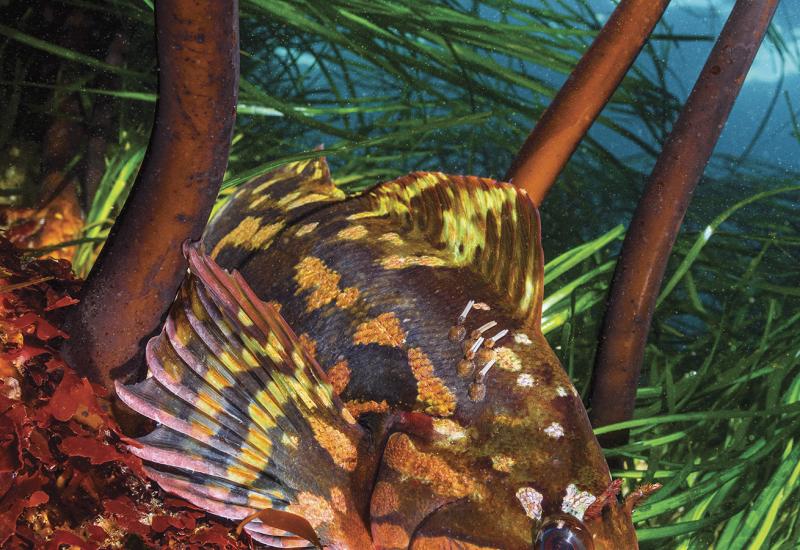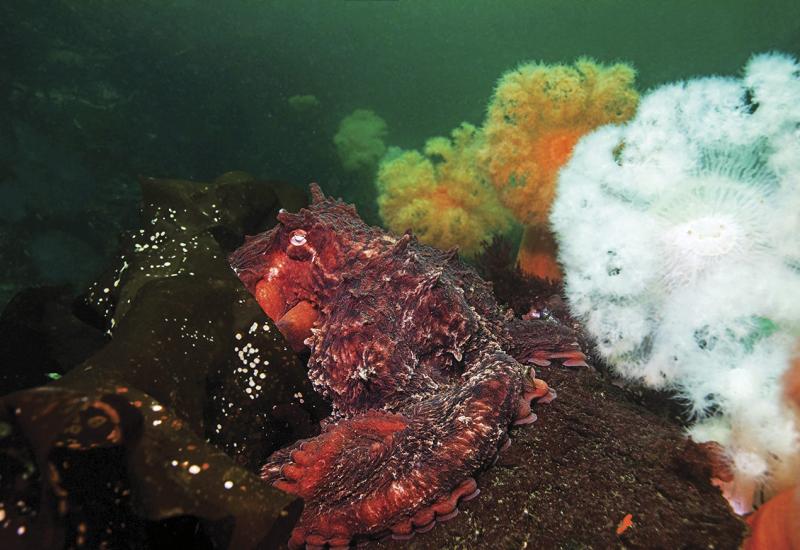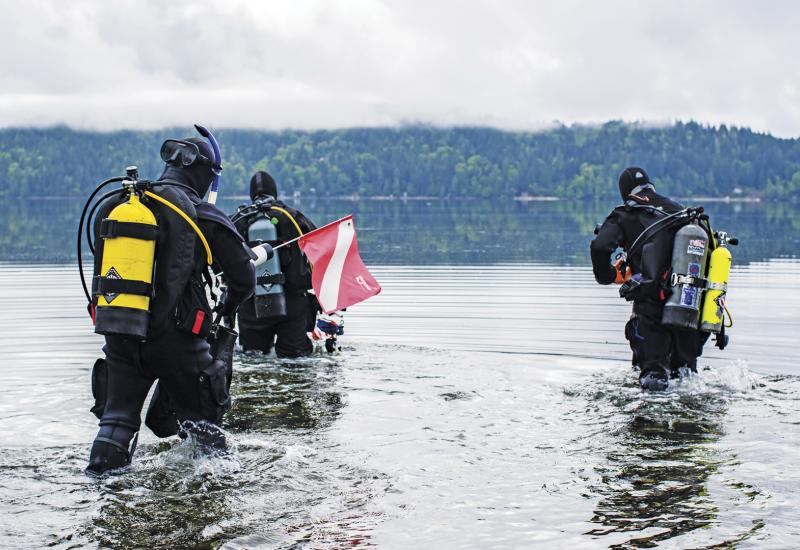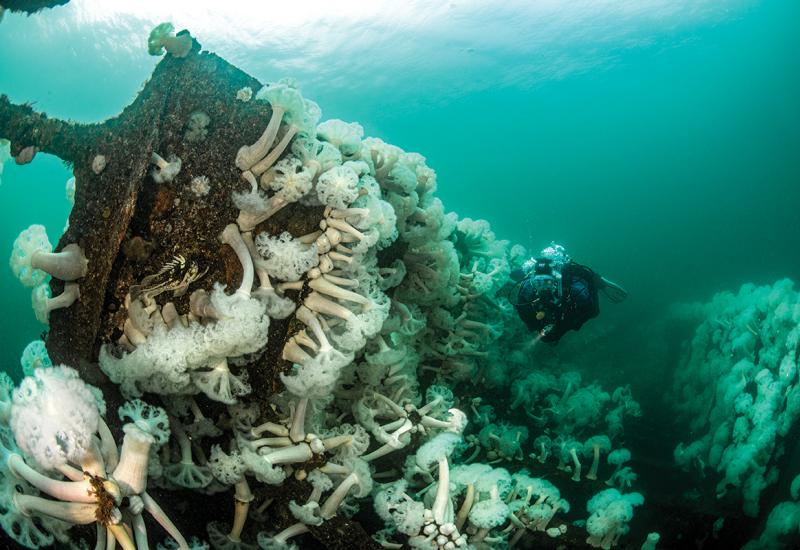Mobile Dive Shop, Seattle Dive Tours, Brings Gear and Comfort Right to the Shore
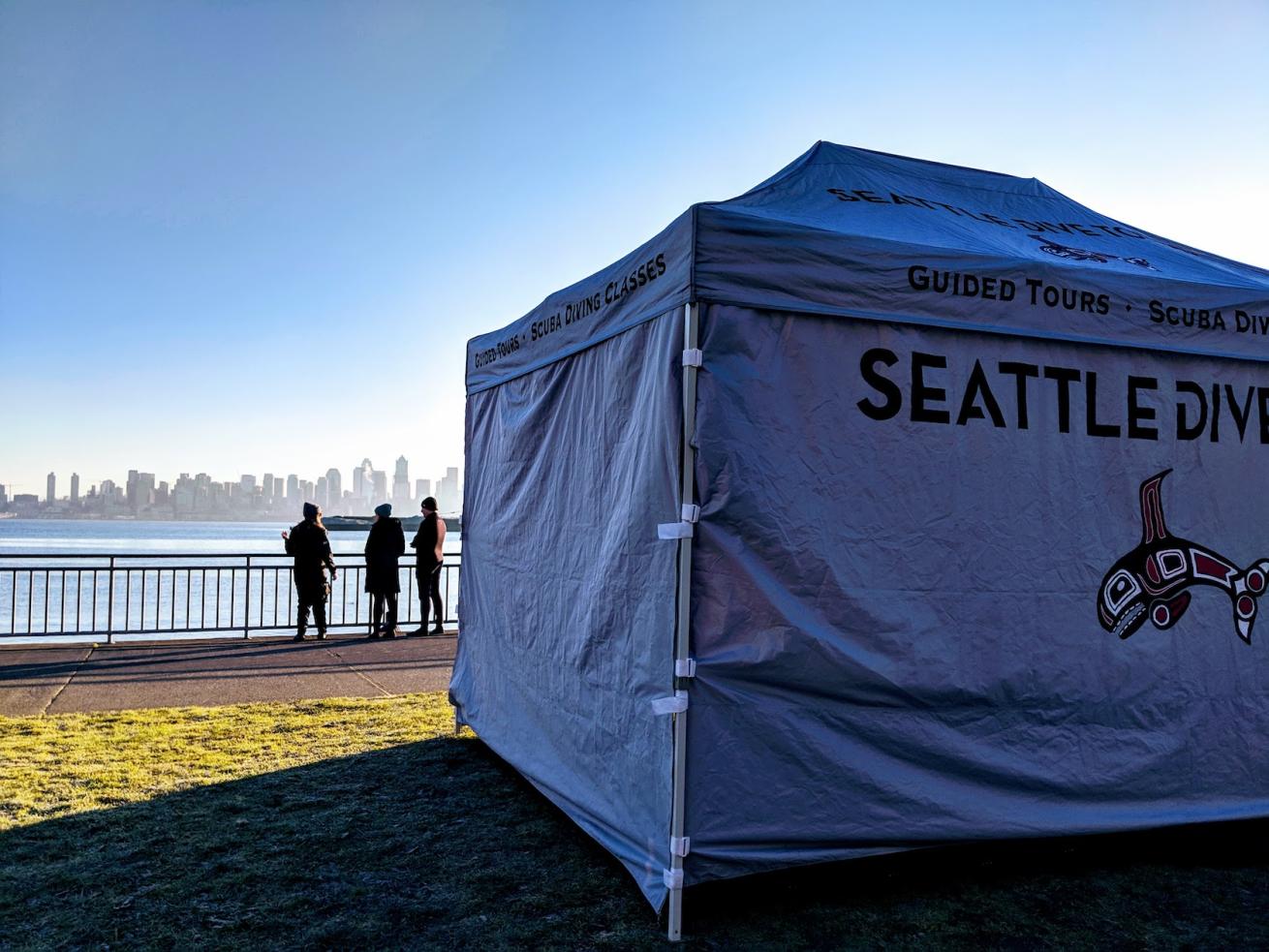
Scott FlahertyA Seattle Dive Tours class, with Seattle in the background.
Shore diving is a whole different beast from boat diving. When you dive from a boat, all of your gear, supplies, and snacks are brought right to the dive site. Not so with shore diving. From fighting for a parking spot to carrying all of your gear down to the beach, if you’ve done any shore diving, you know the struggle.
The team at Seattle Dive Tours certainly does. Shore diving is a major part of scuba diving in the Puget Sound and the Salish Sea, and there are many shore dives that are absolutely worth the distant parking spaces and long treks in heavy gear.
Seattle Dive Tours decided to make it all a little easier.
Related Reading: Ask DAN: How do I shore dive safely?
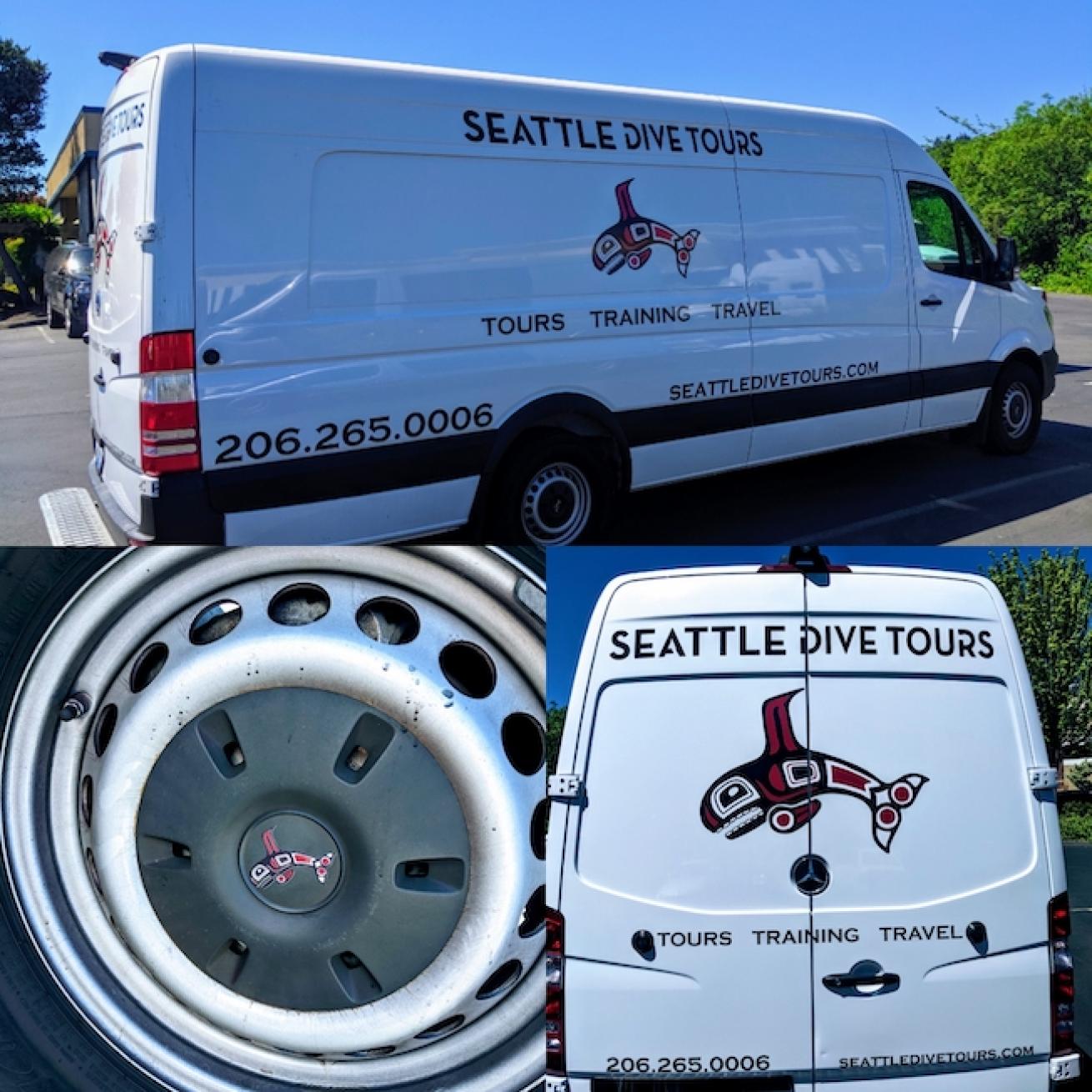
Scott FlahertySeattle Dive Tours’ custom sprinter van.
Enter their customized Sprinter van. The boutique scuba diving company—which offers training to a maximum of two students per class, and tours to a maximum of four guests at a time, to ensure their divers feel safe and receive a personalized experience—isn’t about to make anyone transport their rental gear.
“We try to provide a comfortable dive experience for all of our guests, including transporting all rental gear straight to the beach in our van, so all they need to do is show up,” said Madison Churchill, Conservation Coordinator and Instructor at Seattle Dive Tours. “We have a full canopy tent that we set up and break down every day, with tables, chairs, coffee/tea, heaters in winter, etc. to keep guests as comfortable as possible.”
Popular shore dive sites that Seattle Dive Tours frequents include Saltwater State Park, Alki Seacrest Cove 2, Edmonds Underwater Park, and Les Davis Marine Park.
Store owner Scott Flaherty agreed that their mobile dive van has been a key enabler for Seattle Dive Tours. “The build out of our beach operations has been continuous over the past five years, and none of it would have been possible without the big van.” He added: “Also, we keep an eye out, and the next van will likely be an electric one.”
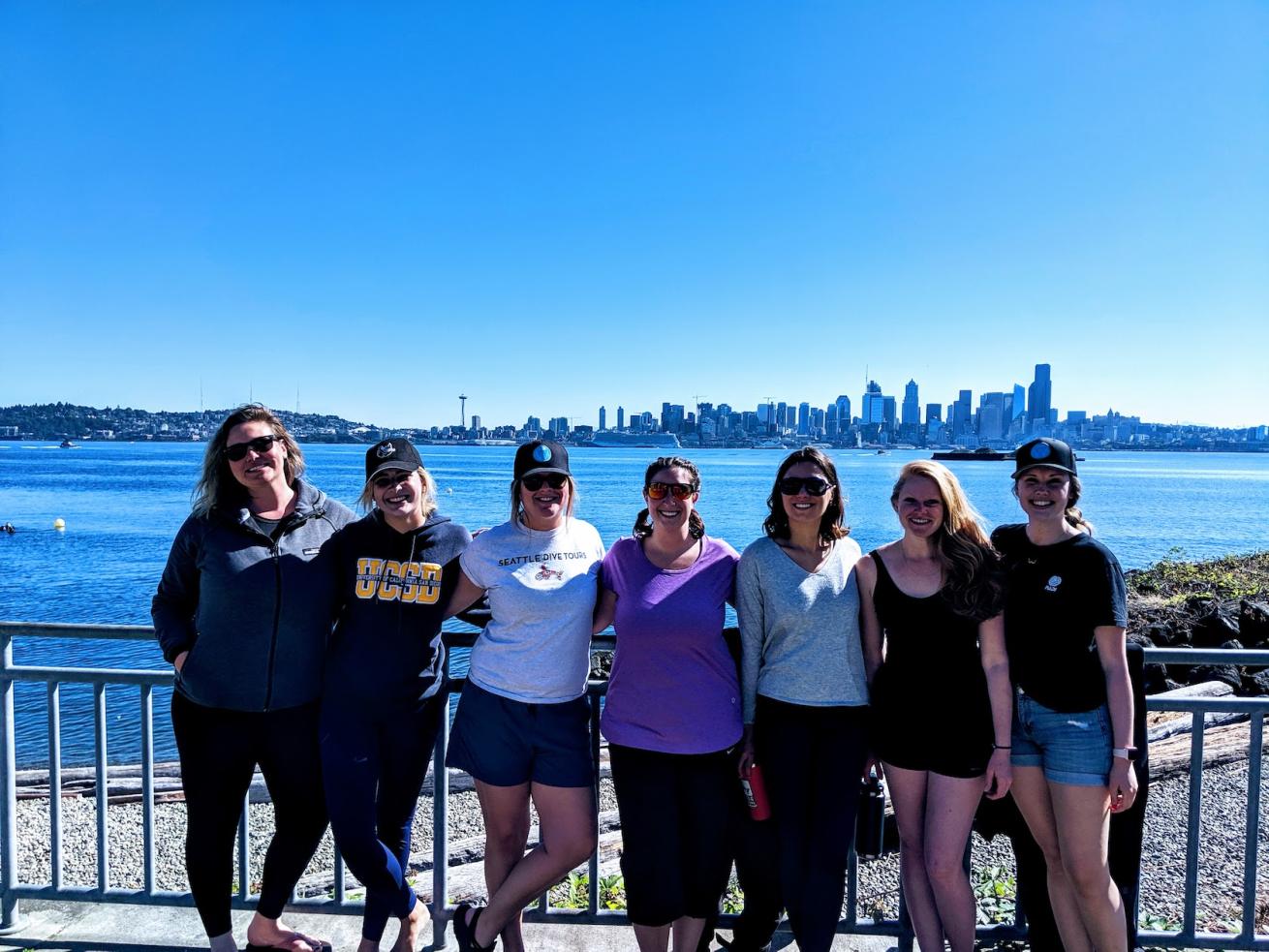
Scott FlahertyAfter a Seattle dive tour.
Lest you think a cool van is the only thing that makes Seattle Dive Tours unique, think again. The majority of their staff are women, which is unusual in the cold water diving community, and something they take pride in. They also just recently became a PADI Eco Center, and have been leveling up their focus on environmental education, community connection, and making diving accessible.
“We have done some recent projects we are really proud of, including our three PADI Distinctive Specialties,” said Madison. “Our main focus is the environment, and all three of these specialties encourage eco-friendly diving habits and foster a closer connection with the local ecosystem. Our first was the Salish Sea Diver specialty. We have also done a Marine Mammal Rehabilitation specialty in conjunction with our local marine mammal hospital SR3. And finally, our Nudibranchs of the Salish Sea specialty was just recently finalized.”
Related Reading: How to Find an Eco-Friendly Dive Center
Personally, they sold me at “nudibranchs”—the Pacific Northwest is a wonderful place to dive for the colorful little critters, and the Highline College MaST Center Aquarium they partnered with for the specialty is one of the most endearing local aquariums I’ve ever visited. I highly suggest it if you’re in the area, along with the Redondo Beach dive site it shares its shoreline with. Just walk into the water and explore the sunken boats, statues, and rock piles along the deep and shallow lines, and be on the lookout for Buffalo sculpin, Giant Pacific Octopus, and the adorable Pacific spiny lumpsucker, among others.
Or better yet, give Seattle Dive Tours a call, and be sure to pick up one of their species identification slates designed for their specialty courses by local artist, dive instructor, and helpful Scuba Diving magazine interviewee Madison Churchill. They really do take care of everything.

